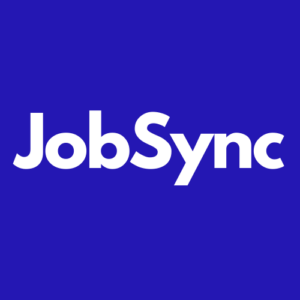
“[Jobsync is] the glue that holds everything together and makes things better.” – William Tincup
Why are companies still requiring candidates to jump through hoops to complete a job application? The goal is to attract qualified candidates to build great teams – but if you’re causing a candidate headache before they even interview, how quickly do you think you’ll have those teams in place?
In most cases it takes 50+ clicks from the job board to submit an application and 9 before they can even get started and on a mobile device, there are even more hurdles. All ATSs aren’t built the same, some will be easier but they still have all of these steps.
When candidates apply on their phone, leave a job board, and land on your corporate site – they’re usually asked to create an account. Your phone [being the innovative piece of tech that it is] has passwords stored from previous applications and thinks it’s going to help you through that account creation by using this old information. When candidates realize they can’t reuse the same login across multiple ATSs, they bail.
The only thing increasing is your application abandonment rate (which is up to a staggering 96%).
Does Easy Apply help build great teams?
There’s a common misconception (from non-recruiters) that recruiters want volume. If people are applying and you have a lot of options to choose from, your job must be easier, right? Wrong.
“Easy apply volume isn’t qualified.” – Leah Daniels
Easy Apply has become a popular option for companies that are looking to simplify the hiring process – but they’re missing a pivotal piece – qualifying every candidate that clicks.
There’s a lot of advice on how to get more candidates and oftentimes it means a lot of work for your recruiters. And recruiters are all suffering from stockholm syndrome – there is a common belief they have done everything they can to make it better – and they are left with a choice of bad candidate experience or terrible recruiter experience.
Recruiters want quality over quantity – unless the quantity includes a funnel filled with all highly qualified candidates, but they know that’s not possible – right?
How does JobSync help recruiters?
Recruiters want to increase your candidate volume and improve their application experience for candidates. But how is that possible without asking recruiters to spend countless hours working on the perfect title or job description?
The answer is relatively simple, integrate your entire application process directly onto your key job sites and watch the quality volume pour in [and the panic sets in].
If JobSync doubles your volume – how do you handle that?
Should you consider automation triggers?
Would you benefit from SMS communication with candidates?
We understand that increasing your candidate flow 2-5x the amount that you’re used to can cause some anxiety – so remember this: volume first, quality second, process third.
Once you have the applicants – let’s build the integration to qualify them by getting those ATS job level questions and screeners built into the quick apply application. Once you have volume and quality – now it’s time to think about process improvement. There won’t be a sudden rush of free time, but investing in automation, text messaging, and automated scheduling tools are the natural next step to get to candidates, and ultimately hires, first.
Why is the hiring process so hard?
From job descriptions that get copied and pasted as job posts, to too many interviews, to overworked recruiters – companies seem to thrive on putting hurdles in front of candidates.
Some things to remember so you can avoid using these hurdles during your process:
Hiring managers aren’t professional recruiters.
Increasing clicks doesn’t mean more candidates.
Candidates don’t want to create an account just to apply to your job.
You don’t have the luxury to talk to ‘a few more’ before you make an offer.
If you want to improve your candidate experience, first improve your recruiter experience.
It’s time to implement tech that simplifies your application process and qualifies your candidates at the same time.
“It’s got to be a relief for recruiters to know you can have a better outcome and don’t have to work as hard.” – William Tincup

